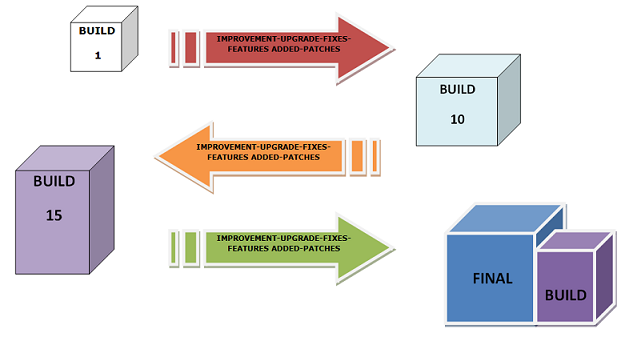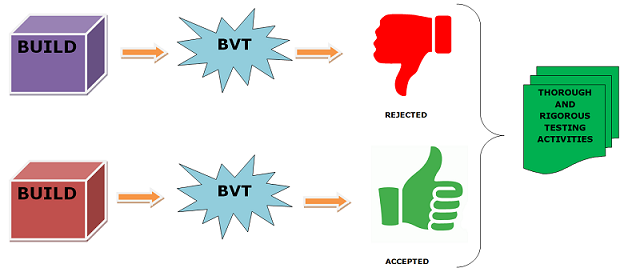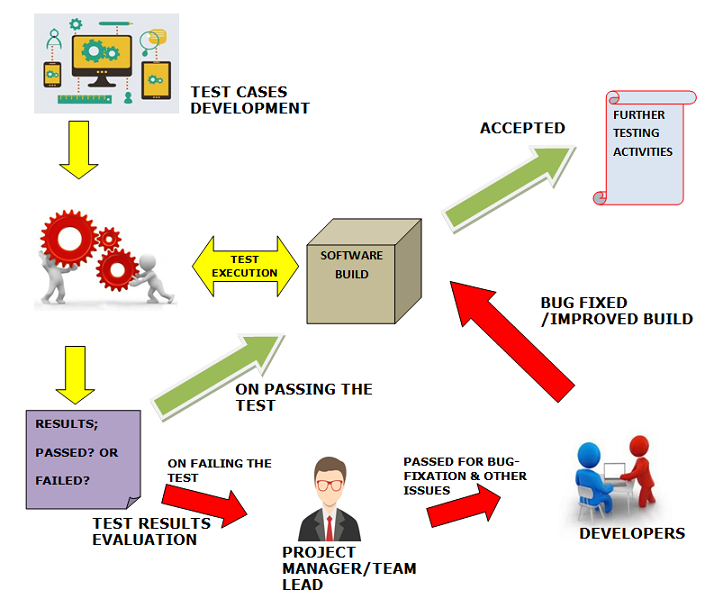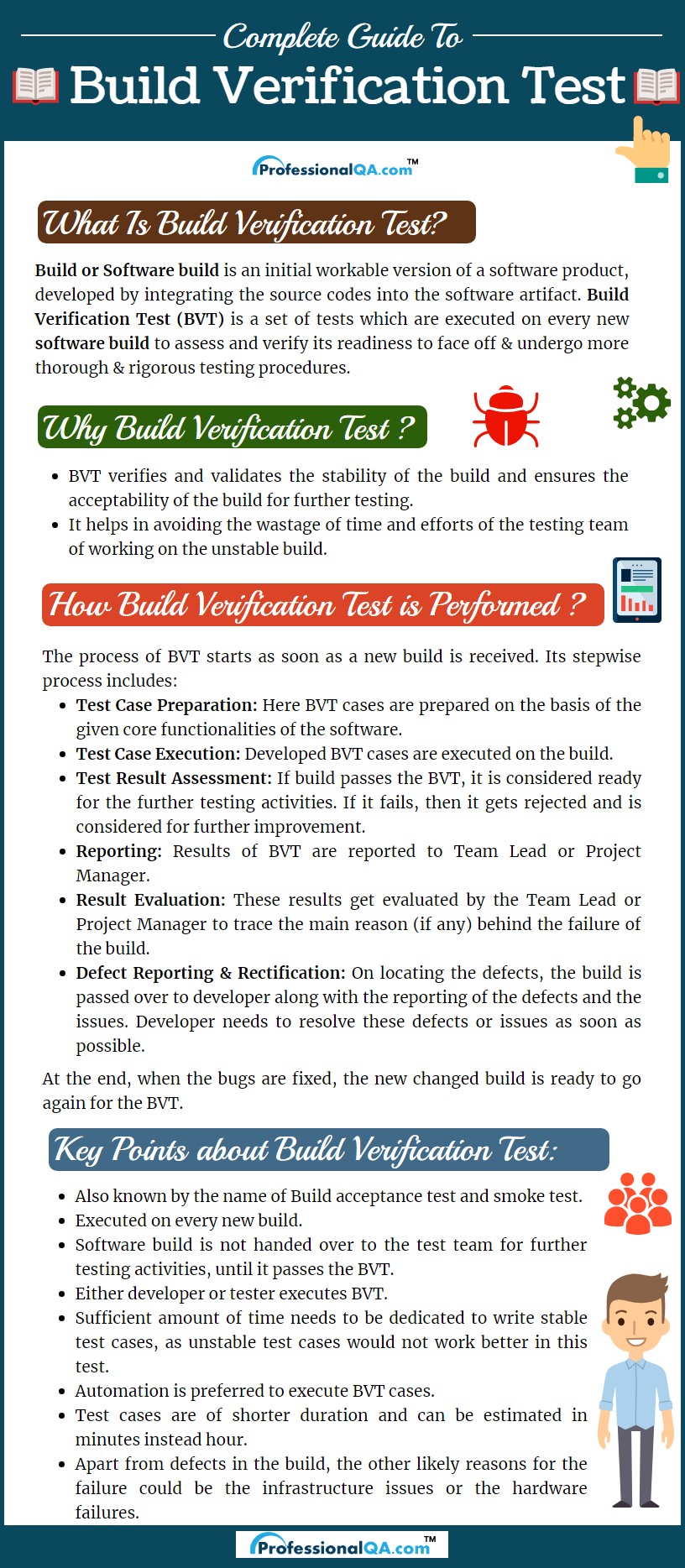


Build or Software build is an initial workable version of a software product, developed by integrating the source codes into software artifact. This build may or may not need improvement depending upon its stability to go through further process of testing.
Build Verification Test (BVT) is a set of tests which is executed on every new software build to assess and verify its readiness to face off & undergo through more thorough & rigorous testing procedures. This type of test examines the primary functionalities of the build and accordingly declares the status of the build in terms of acceptance or rejection for further testing activities.

As BVT certifies the stability of the build and simultaneously ensures the acceptance of the build, this testing is also known by the name of Build Acceptance Testing. Here, it is pertinent to mention that BVT is just the other name of smoke testing. Build verification test, build acceptance test and smoke test are three different names of one testing methodology.

It may not be guaranteed that whether the newly developed software build is sufficiently stable to go for further testing or not. Testing team puts lots of efforts and time in determining, preparing and executing the test plans and cases on software build so as to improve its quality. However, all this hard work of the testing team goes into astray when at later stage, the build is found to be incapable to sustain further rigorous testing process as it lacks the stability along with the essential functionalities.

BVT verifies and validates the stability of the build and ensures the acceptability of the build for further testing. This avoids the wastage of precious time and sincere efforts of the test team to work on relatively unstable build.
BVT consists of small set of test cases so as to execute them in no longer time in order to evaluate the mainstream and core functionalities of the build. It starts as soon as a new build is received. The step-wise process of performing the Build Verification test is detailed as under:

The BVT is a continuous process and needs to be iterated again and again, until it validates the build's stability to go for the further testing process.
Some of the notable features of BVT are
Build verification test is one of the earliest tests executed on a software application which not only verifies and validates the core and essential functionalities of the application but also prevent testers and saves their valuable time and efforts in testing the unstable build, which may break down at later stages during the course of testing.
You may also like to read our next article on BVT Check-list to explore productive steps and essential points to carry out efficient build verification test.

Advertisement: